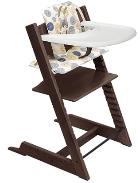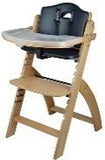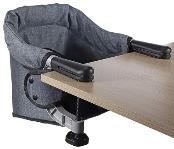September 2023 Pediatrics Newsletter
“Kindness begins with the understanding that we all struggle.”
Hi all! For anyone new to the newsletter, my name is Ashley Stone, and I am the pediatric SLP at DiagnosTEX. Our outpatient Modified Barium Swallow Study clinic is now open for pediatric patients of all ages! We have supported seating devices for those that are in need and have the capability to also complete studies in a side-lying position. We accept most insurances.
Guest Expert: I would like to welcome Terra Brown, OTR, from Therapedia, LLC in Keller. Terra wanted to share some tips and reminders for families and therapists on how important proper positioning is during all feeding opportunities. Enjoy!
Proper seating and positioning play a foundational role in developing safe and effective feeding for infants and toddlers. By ensuring stability, alignment, and comfort, appropriate seating directly impacts a child's ability to focus on a meal, explore new textures, and develop emerging, foundational motor skills. These considerations serve as stepping stones in a child's overall developmental journey.
The following guidelines are suggested for caregivers and professionals:
- Use an Appropriate High Chair: Ensures proper support and stability, preventing slouching and promoting focus on eating. Look for simple chairs without excessive cushioning. Avoid highchairs that place the pelvis into a posterior position.
- Maintain a 90-90-90 Position: Aids in alignment and balance, facilitating coordinated movements for swallowing.
- Provide Head Support if Needed: Assists with neutral positioning, vital for safe swallowing, proper respiratory support and preventing choking.
- Avoid Presenting Food from Above the Child's Head: Minimizes risk of choking by maintaining a safer swallowing position at eye level.
- Use Trays Thoughtfully: Consider removing tray and bringing the highchair to the table to ensure comfort and ease of arm movement, encouraging increased familial participation, exploration, and self-feeding. Keep the tray at elbow level.
- Avoid Overstuffing Cushions: Prevents poor alignment and pushing scapulas forward, ensuring proper posture for effective respiration and swallowing.
- Monitor Foot Positioning: Feet should be supported, not dangling. A footrest or surface that allows the feet to rest flat enhances stability and posture.
- Encourage Self-Feeding: When appropriate, allow the child to explore food and utensils, supporting the development of fine motor skills.
- Observe and Adjust: Each child's needs may differ. Observe their comfort and ability to eat effectively, making adjustments to seating and positioning, as needed.
- Avoid Distractions: The eating area should be free from excessive toys or distractions, allowing the child to focus on the meal.
Highchair Recommendations: All may be found on Amazon.
|
 The Original Stokke Tripp Trap Chair This chair provides proper stability and foot support. Can easily be moved to a standard table and grows with the child. |
 The Abiie Beyond Junior Convertible Wooden High Chair This is a less expensive version that is similar to the Tripp Trapp with similar benefits but has a lower weight rating. |
 Fisher Price Baby Portable Baby & Toddler Dining Chair This is a great travel seat but can also be placed in a standard chair and used every day. The way it sits on a standard chair provides foot support |
 Foundations Easy Serve Low Wood Feeding Chair This is a great seat that we often use with feeding therapy clients. The company offers multiple heights. If it is a bit too tall, we place a box or small stool under the child's legs. |
 *Just say NO to this style of seat. It may be convenient but provides no foot support and places the child in a posterior pelvic tilt. |
*In general, avoid seats that recline. Typically, we want to avoid reclining a child to eat. If they are not close to sitting independently, they may not be ready to start solids. Specific accommodations may be recommended for children with motor differences, such as Down Syndrome and CP.
AmpCare: Have you heard about AmpCare and want to become a certified user? They offer In-person certification courses, as well as a hybrid option. They have the following dates available for certification:
- Hybrid & Zoom: Sept 12th & 13th from 4-6pm. Must attend both days.
- Live, In-Person in Ft Worth: Sept 15th from 8am-5pm or Sept 16th from 8am-5pm.
Visit swallowtherapy.com for more information!
Contribution: Do you have an interesting topic that you would like to share in a newsletter, whether it be a research article you have read or a patient you have treated? Email me if you are interested!
I, and the rest of the DiagnosTEX staff, look forward to helping you serve your patients and ensure a safe diet for ALL children.
Keep an eye out for a newsletter each month & feel free to share with your colleagues and friends!

